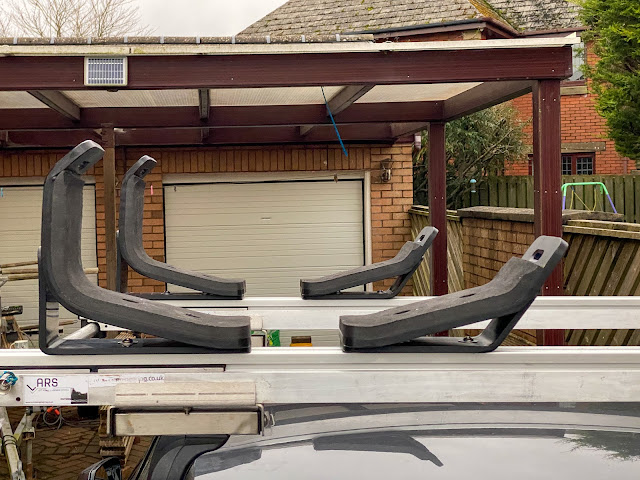The elegant solution is this set of cradles from KCS. Unlike J cradles, which carry the kayak on edge, these carry the kayak keel down when on the roof. When the rack is down the side of the car, the extended lower cradle holds the kayak completely securely while you sort out the straps. It works so simply and effectively! The foam is 15mm thick and the supporting arm on the left hand front cradle is deeper than on the rear cradle to match the shape of a typical kayak. The left hand cradles can be supplied with a different shape if you have a kayak with a more extreme measurement, such as the Rockpool Menai 18. The cradles are supplied with appropriate fitting kits to suit various makes of side loading rack. In terms of expected durability, I still have my original set of KCS J bars with 5mm foam, which I bought 20 years ago. They still have exactly the same shape as the day I bought them.
Any snags? My car is a mid size car and there is just enough room for a second set. A smaller car would not have room. However, if you were carrying two kayaks there is plenty of room for a set of J cradles alongside these V cradles and of course the other paddler could then help with the lift! So it is not really a problem at all!
Overall this is a brilliant bit of kit for anyone with a side loading rack. I would say even if you do not currently own a side loader rack, you should still consider getting a pair of these now instead of Normal V or J cradles. You can still use them as V cradles on a conventional roof rack but you will then have them for when you inevitably need to move to a side loading rack to save you ageing shoulders!!!







































